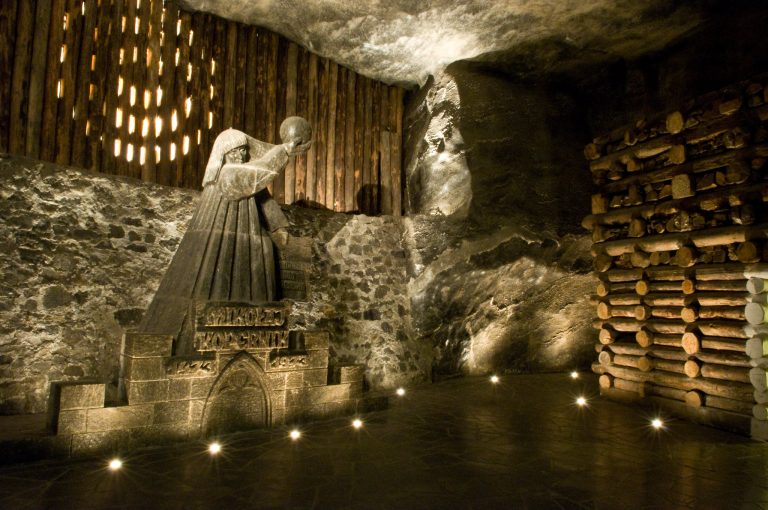Salt is not just a flavorful friend in the kitchen; it is one of history’s greatest resources. The mineral’s ability to preserve food was a contributing factor in early civilization, allowing people to transport their sustenance over long distances. Control over the valuable resource empowered dynasties and empires.
On the Mohs scale for mineral hardness, salt’s rating is only 2.5 out of 10. Thus, the mineral is easy to carve, and when it is mined from underground sources, there is potential for creativity. One salt mine in Poland took this endeavor seriously and made sure it stood out amongst the rest. Even though operations ceased decades ago, it still pulls in millions of sightseers every year.
Grand chambers of Wieliczka
The salt mine is located in a small town called Wieliczka, approximately 14km southeast of Krakow, Poland. Its nine levels of excavation reach 1,072 feet (an estimated 327 meters) below the surface. Approximately 2,500 chambers linked to corridors that stretch to an astounding 245 kilometers (152 miles), and 26 mine shafts can be accessed.
What makes this mine different from most others is its grandiose interior. Via the “Tourist Route,” guests descend pristine wooden staircases that lead into articulately carved halls with saline lakes, held together by wooden supports to prevent self-collapse. Chandeliers made of salt illuminate the mine like a palace ballroom. There are even chapels within its depths, carved out of the salt surroundings, culminating into something akin to a subterranean metropolis for the workers.

“The corridors and even the floor are made of salt,” said Aleksandra Sieradzka, part of the mine’s communications department, as reported by Bored Panda. “The chandeliers also contain crystal salt – the purest type of salt.”
Success
You are now signed up for our newsletter
Success
Check your email to complete sign up
The “Miner’s Route” allows a more interactive experience; participants are able to act the role of foreman or tour guide, performing the everyday routines of working underground.
Processing the salt itself isn’t too hard, but it does take an expert to carve it, explained Sieradzka.
“Every block of salt is different,” he said. “It differs not only in size or hardness, but also in color, which can be used in an interesting way in the act of creation.”
History of the mine
The salt mine in Wieliczka was constructed in the 13th century. At the end of the Middle Ages, the production of salt skyrocketed to between 7,000 to 8,000 tons, involving approximately 300 to 350 workers in the town.
Expansion of the mines was conducted in the 16th and 17th centuries. Even in 1772, when the mine fell under the control of the Habsburg Empire, operations continued, with tourism into the mine thriving well into the 20th century.
The site has attracted millions of visitors for centuries, including Nicolaus Copernicus, Pope John Paul II, and former US president Bill Clinton, even after the decision was made in 1996 to finally shut down salt production.
Historical value
Despite the shutdown of industrial production, the mine still holds cultural significance today. It has become one of Poland’s most popular attractions since it was made a UNESCO World Heritage site in 1978.
Every year, around 2 million people from across the globe come to witness the grand spectacle of what was once an industrial powerhouse. The mines have become a host for parties and events, especially the annual New Year concert in January.
In addition to a “health resort” and a four-star hotel located above, it holds a Catholic Mass every Sunday, with wedding ceremonies even taking place in the chapels.
Recognizing its historic and cultural value, engineers are working hard to keep this ancient wonder alive for the foreseeable future, preserving it as a special monument for the world to see.
While modern life has its many conveniences and attractions, tradition is what our cultures are founded upon, and when it is preserved, nothing is ever really lost. By protecting and preserving our cultural sites, we can fascinate and broaden youthful minds for generations to come and help them recall and respect traditional values.















